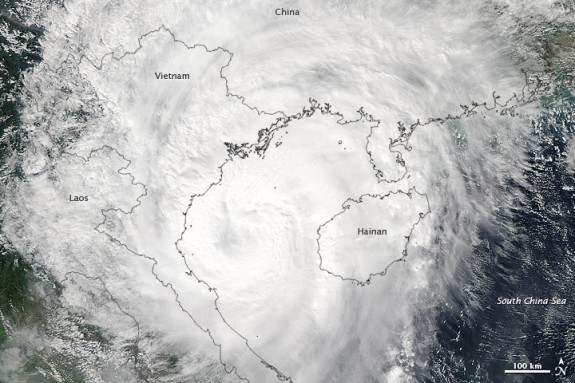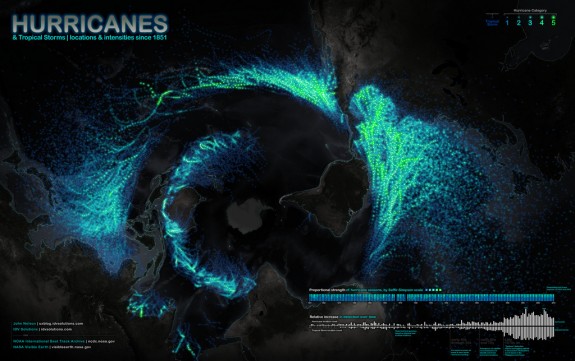While the East Coast Focused on Sandy, Typhoon Son-tinh Battered East Asia
Sandy was not the only tropical cyclone this week

Typhoon Son-Tinh worked its way through southeast Asia over the past week. Click here for a high resolution version. Photo: Aqua – MODIS / NASA Earth Observatory
Hurricane Sandy, now post-tropical storm Sandy as it limps north into Canada, killed 82 people, including 16 Americans and wiped out power to as many as 7.5 million people across the eastern U.S. The images of the damage done by the flooding waters and powerful winds supersede in their severity even what Photoshopping trouble-makers could imagine.
But while the Atlantic states hunkered down, a fierce storm, though much smaller in strength and size than Sandy, was at work devastating eastern Asia, with deaths reported in the Phillipines, Vietnam and China. Son-tinh, first a typhoon, then a tropical storm, killed as many as 30 people, forced more than 176,000 to evacuate from their homes, and caused an estimated $145 million in economic damages as power outages, floods, and landslides affected the region.

Click here to embiggen. A map of global tropical cyclone activity, from 1851 to the present, with Antarctica at dead center, the Americas to the right, Asia to the left. Photo: John Nelson / IDV Solutions
North Americans are most directly affected by hurricanes that spawn in the tropical North Atlantic and work their way over to the Gulf of Mexico and, sometimes, up the eastern seaboard. But tropical cyclones are a common occurrence worldwide. In this map of global tropical cyclone activity since 1851, put together by IDV Solutions’ John Nelson, you can see the effects of the storms worldwide. “Tropical Cyclone” is the blanket scientific term for storms of this type—known as “hurricanes” near North America, “typhoons” in the northwestern Pacific, “cyclones” near Australia and “tropical cyclones” in the Indian Ocean.
More from Smithsonian.com:
Can We Link Hurricane Sandy to Climate Change?
/https://tf-cmsv2-smithsonianmag-media.s3.amazonaws.com/accounts/headshot/smartnews-colin-schultz-240.jpg)
/https://tf-cmsv2-smithsonianmag-media.s3.amazonaws.com/accounts/headshot/smartnews-colin-schultz-240.jpg)